Featured in the Summer 2025 issue of Travel Life magazine
by Diana Ballon
Set in the northeastern corner of Europe, Tallinn and Vilnius are two capital cities with rich medieval history, old towns that boast UNESCO World Heritage status and proximity to forest and wildlife that make visits there as charmingly urban as they are bucolic and green.
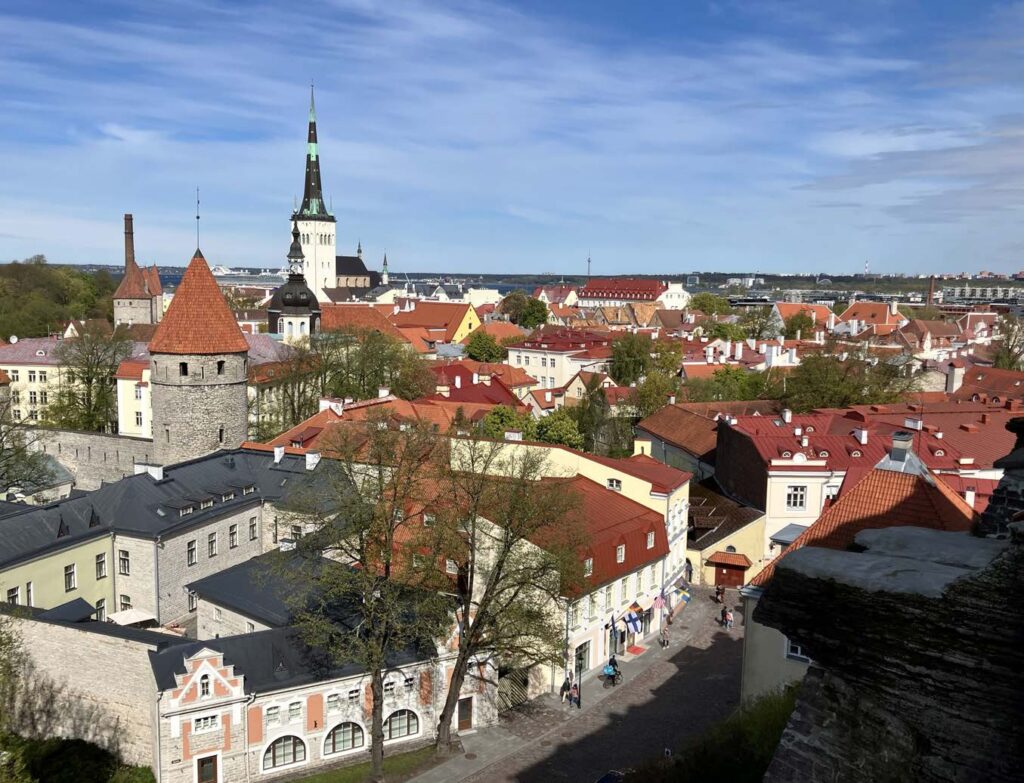
When I booked a recent Baltic cycling trip with Exodus Adventure Travels, one of my main motivators was the fact that the land there is pretty flat (no crazy hills like in Greece or Switzerland), and the temperatures are — while vastly fluctuating — overall much cooler than their southern European counterparts.
What I was to discover — they aren’t just cool in temperatures, the vibe there is seriously cool. Churches and castles are as common in Estonia and Lithuania as Tim Hortons are back home in Canada.
Tallinn & Vilnius
There are definite differences between the two cities. Estonia’s capital, Tallinn, exudes Nordic (especially Finnish) and Germanic influences, while being predominantly Protestant. Once home to wealthy merchants, its Old Town is renowned for its well-preserved medieval architecture. And as a city with about 460,000 residents, Tallinn is much smaller compared to the more than 600,000 inhabitants in Vilnius. Tallinn is also located on the country’s northern coast, while Vilnius sits about 300 kilometres from the Baltic Sea.
Vilnius is renowned for its Baroque architecture (there are about 25 churches in its old town alone), making it distinct from other European cities. The city is rich in classical music, opera and theatre and has strong Catholic traditions.
But what makes these two “brothers” connected is a shared history of the countries’ survival from decades of Soviet occupation, mass deportation and policies undermining their educational systems and cultural traditions. But they also shared two phases of independence (in 1918 and then in 1990-91), emerging as countries with a gritty survivalist spirit, and fierce pride in their own identities.
Together they participated in the “Baltic Way,” which was when two million people from Estonia, Latvia and Lithuania linked together in 1989, forming a 600 kilometre long human chain through the Baltic countries, which was one of the largest non-violent demonstrations ever to exist.
Spend 48 hours
Tallinn
STAY at the Schlössle Hotel, a Small Luxury Hotel of the World. As you enter the lobby, rhubarb sparkling wine or Prosecco are there to welcome you, next to a wood-burning fire in a lounge with its rough-hewn stone walls and timbered ceiling. This 14th Century, 23-room boutique hotel once hosted such luminaries as Alice Cooper, Sting, Prince Charles – and Queen Elizabeth II for lunch, as evidence from the guest book in the lounge.
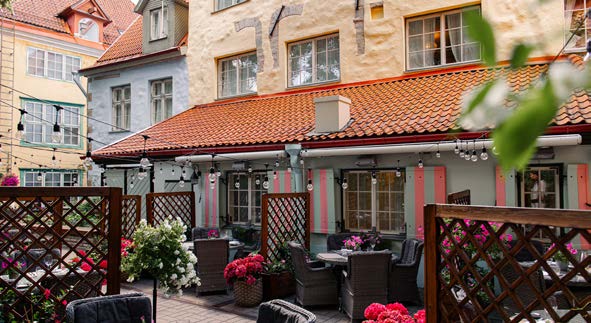
(Courtesy of Schlössle Hotel)
Located in the city’s Old Town, it is close to restaurants and cafés, although you can stay in one of their cozy rooms, and enjoy traditional dining in their Stenhus Restaurant. The breakfast included in a hotel stay, is extensive, from sea buckthorn and green detox shots as part of the buffet, to wild mushroom omelette ordered from the menu.
EAT at one of many nearby restaurants. Rataskaevu 16 offers modern European dishes served by friendly waitstaff at reasonable prices. Restaurant 180° by Matthias Dieter and Noa Chef’s Hall are both Michelin fine dining restaurants with tasting menus. Or choose a less experience but fun local experience at Kolmas Draakon in Town Hall Square, or the Reval Café.
DO book a free walking tour, which begin in front of the Tourist Information Centre in the Old Tow. (Tips appreciated.) We loved the GuruWalk “Tales of Reval Immersion tour” led by Cedric Stimmlich who entertained us with many amusing medieval stories.
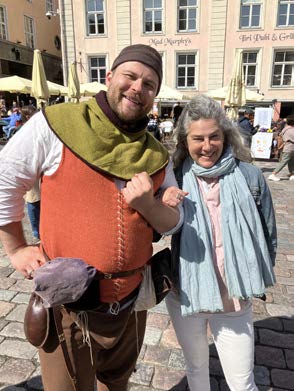
Noteworthy places to visit include the Niguliste Museum (in a 13th Century church), which has half hour organ recitals on weekends; the Town Hall Square, including the Gothic Town Hall; and Toompea Castle, seat of the Estonian parliament. Make time also to step inside some of the city’s many medieval churches, such as St. Olaf’s Church, once the tallest building in Europe. There you can climb 232 steps to its viewing platform for a stunning view of the city.
Vilnius
STAY at the historic Neringa Hotel. Located on Gediminas Avenue, the city centre’s main shopping street, the hotel was like an island of modernism when it opened in 1960, with Bohemians, artists and intellectuals meeting at its legendary restaurant to escape the gloomy realities of Soviet occupation. The hotel’s design incorporates a Scandinavian style simplicity and minimalism, with warm colours and shapes inspired by Lithuanian folklore and the Neringa seaside. The hotel has three bars – a roof terrace with panoramic views, a lobby bar on the main floor and cozy bar in the basement – along with 124 bright, modern rooms.
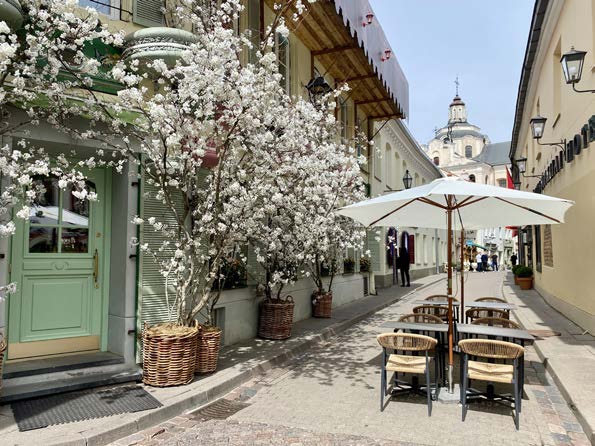
EAT at Michelin-recommended Ertlio Namas, where you can choose between a four- or six-course Lithuanian meal, with wine pairings, where small dishes are accompanied by a history lesson exploring the food’s expression of traditions dating back to Medieval, Renaissance and Enlightenment periods from as far back as the 16th Century. Courses we enjoyed included trout terrine with eel and carrot sauce; snails with butter biscuit and asparagus; sorrel soup with rabbit dumplings; quail with grits; beef with mushroom stew; and wafers with rhubarb and goat milk ice cream for dessert.
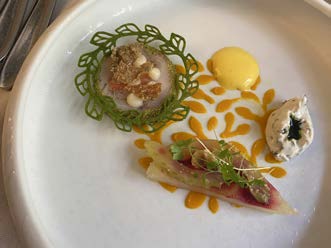
(Diana Ballon)
DO Take a tour of the Old Town (it’s one of the largest in Europe, but still very walkable) and guide Justina Petrauskaite Meškauskiene, does a great job of capturing its history. Visit the Vilnius Cathedral and climb its bell tower; the Presidential Palace; the city’s impressive university (the largest in the country); and the Museum of Occupations and Freedom Fights, in a building that once housed KGB headquarters and a prison. Then cross to the other side of the river to visit the Uzupis quarter, with its many hidden courtyards, galleries and cafés and Bohemian vibe.
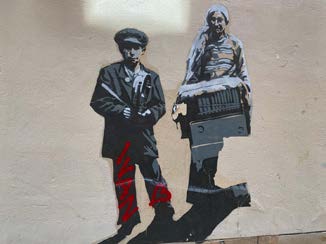
Visit the former Lukiškes Prison, which has been converted into a cultural hub called “Lukiškes Prison 2.0,” which is now an epicentre of culture with everything from art exhibits, to concerts, guided tours and festivals.
Make time to visit the Jewish quarters. Once dubbed by Napoleon the “Jerusalem of the north,” because of its vibrant Jewish community pre-World War II, literally 95 percent of Jews were killed during the war. A tour will allow you to revisit historical elements such as wall paintings, memorial plaques and monuments.
Whether you visit one or both, Tallinn and Vilnius are each worth discovering and offer an enticing alternative to some of the more well-traversed European destinations.